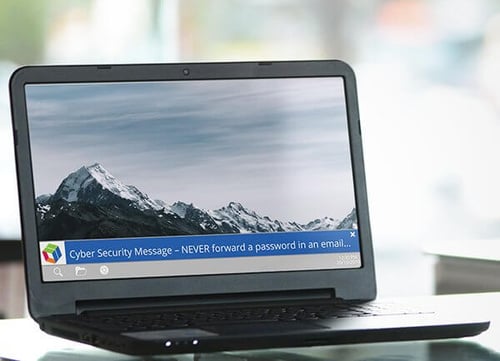
Are you finding it harder to get your compliance communications heard? Are you at risk of your staff missing important messages? You’re not alone.
Digital workplaces have changed the rules for compliance. New digital tools and virtual teams are commonplace. Employee distraction is greater than ever. Just creating an intranet page to store compliance resources won’t cut it anymore.
Compliance communications need to evolve from issuing instructions to influencing culture. This is the way to make your compliance and ethics program stick in today’s digital workplaces.
With effective communications a hot topic at the SCCE Compliance & Ethics conference, it’s the right time to unravel the secrets of building a culture of compliance in digital workplaces.
1. Short and sweet
Workers today are busy multi-taskers. They’re using multiple screens, constantly switching between applications, skimming the content in each. In this environment, short bursts of communication are all they are likely to notice – or devote any time to reading.
Frequency of message trumps length of content. Break down your longer communications into a series of short, punchier messages. Not only will this ensure the content of each message is more likely to be seen, the repetition serves to raise visibility of Compliance generally.
It’s been suggested that six 5-minute messages delivered at intervals throughout the year can be much more effective than one 30-minute message at the beginning. Construct your compliance communication plan with this type of messaging in mind.

2. Lift your game
It’s true that policies and processes aren’t the sexiest of topics. But that doesn’t mean your communications need to be boring. Engaging digital workplaces is a matter of getting creative.
Gamification is a good way to elevate your compliance communications from stuffy to stupendous. Create regular staff quizzes to test understanding in a light-hearted and non-threatening way. Publish leaderboards to generate some friendly rivalry.
Remember to provide positive affirmations throughout. This is a powerful way to enhance learning. Commend staff who do well and encourage those whose knowledge needs improving. The carrot is more effective than the stick when it comes to building a compliance culture.

3. Be cyber-secure
Ask any Compliance Manager what their top concern is this year and cyber security is certain to be near the top. If you think it doesn’t concern you, consider that hacker attacks strike every 39 seconds. And when it comes to cyber security, staff are your Achilles heel.
Foster positive behaviors by providing valuable information that employees can use in both their professional and personal lives. As well as demonstrating good corporate care, it also helps ingrain correct behaviors which are then replicated at work. After all, communication is most successful when the content is more meaningful.
Provide helpful tips like best practice around social media usage or online privacy. Promote these via compelling computer screensavers. Before long, compliance has become second nature.

4. We are the champions
The growth in virtual teams has enabled staff connection and collaboration, but made building positive culture harder. Company-wide initiatives are more difficult to arrange. Isolated staff are more prone to lapses in compliance.
Introduce local or departmental champions to fly the flag at a more grass roots level. They will become your representatives throughout the organization – disseminating compliance information, providing updates and collecting feedback.
These champions become powerful conduits between Compliance Managers and employees. They help overcome the challenges of dispersed workforces and raise the visibility of Compliance at the team level where employees have most daily interaction.
5. Lights, camera, action!
Digital workplaces need communication tools to match. Channels like video can be more successful at engaging staff, whether through compliance training or campaigns.
Video works because it brings real-world situations to life and better conveys emotion. These are important attributes for building employee awareness and recall around important compliance messages – and ultimately effecting behavioral change.
Video messages can be easily circulated among virtual teams so that no-one misses presentations or training sessions. Their visual nature also makes video ideal for reaching younger staff and those with different modes of learning – both of whom are unlikely to respond to lengthy corporate emails.
In today’s tech-heavy workplaces, culture-building can be hard. Compliance communications need to refocus from growing employee knowledge to building positive behavior.


